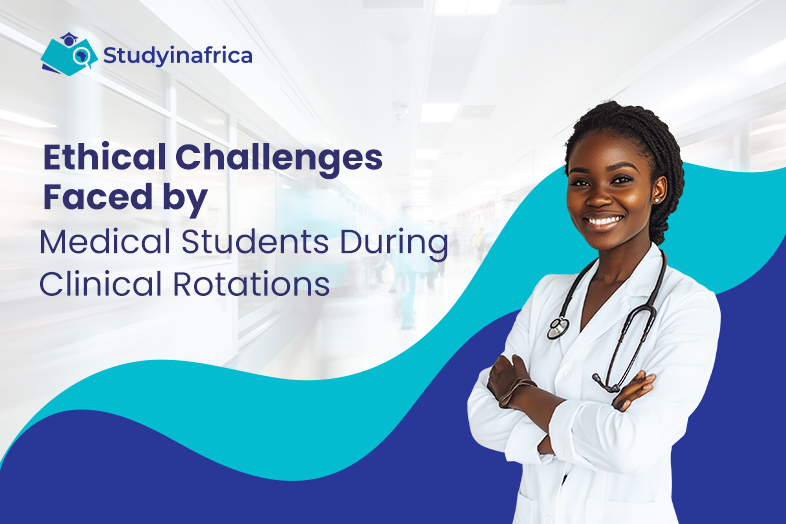
Blog Summary
Early exposure to anatomy and physiology forms the foundation of medical education. This article explores how learning these core subjects in the pre-med stage not only improves academic performance but also develops future doctors’ clinical skills. We also examine how evolving education systems—particularly in Namibia—are making these opportunities more accessible through flexible study options and quality institutions.
- Introduction
- Why Anatomy and Physiology Matter from the Start
- A Growing Focus on Foundational Sciences in Namibia
- Pre-Medical Programs: Starting Early with Purpose
- Flexible Learning Pathways for Modern Students
- Accredited and Recognized Institutions Matter
- Early Learning Builds Better Clinical Skills
- Preparing Namibia’s Next Generation of Doctors
- Conclusion
Introduction
A doctor’s understanding of the human body begins long before stepping into a hospital. It starts with the intricate study of anatomy and physiology—subjects that provide the framework for all future learning in medicine. The earlier students are introduced to these disciplines, the more confidently they progress through medical school and into clinical practice.
In countries such as Namibia, where healthcare systems are developing and the need for qualified professionals is increasing, early science education is gaining greater recognition than ever before. Students preparing for a career in medicine benefit greatly from institutions that embed these subjects into their pre-med admission curriculum. Whether through traditional on-campus learning or flexible digital platforms, these early exposures are shaping the next generation of healthcare leaders.
Why Anatomy and Physiology Matter from the Start
Anatomy teaches the structure of the human body, while physiology explains how its systems function. Together, they form the bedrock of medical knowledge. Students who study these subjects early on gain a deeper understanding of disease mechanisms, surgical procedures, and diagnostic reasoning.
This foundation is particularly valuable in pre-med programs, where early familiarity with medical terminology and basic human biology reduces the cognitive overload often experienced during the first year of medical school. For students in Namibia, access to this foundational knowledge is becoming more streamlined thanks to curriculum reforms and the expansion of health-focused programs across the country.
A Growing Focus on Foundational Sciences in Namibia
Namibia’s education sector has seen significant development over the last decade. With more students opting to study in Namibia rather than seek education abroad, universities have begun enhancing their science and health programs to meet international standards.
Leading institutions now understand that building strong doctors begins at the pre-med level. Several of the top universities in Namibia have integrated anatomy and physiology into their foundational courses, ensuring students are academically prepared before advancing into clinical subjects.
This shift is also supported by government policies encouraging investment in higher education in Namibia, with a focus on producing qualified healthcare professionals to serve both local and regional needs. According to the World Health Organization (WHO), sub-Saharan Africa requires an additional 6.1 million health workers by 2030 to meet basic care needs. Namibia’s investment in early science education—particularly in anatomy and physiology—aims to help bridge this growing skills gap and build a sustainable healthcare workforce for the future.
Pre-Medical Programs: Starting Early with Purpose
Pre-medical education is the critical first step for aspiring doctors. It’s a time to test commitment, build academic stamina, and explore scientific disciplines that will shape one’s future career. Including anatomy and physiology in this stage helps students develop problem-solving skills, spatial reasoning, and the ability to connect biological concepts with real-world patient care.
In Namibia, students enrolling in pre-med admission programs are increasingly being introduced to lab work, interactive models, and virtual simulations of body systems. These hands-on experiences not only improve comprehension but also ignite a deeper passion for the medical profession.
Flexible Learning Pathways for Modern Students
One of the most promising advancements in medical education has been the rise of distance learning courses in Namibia. These options have opened doors for students who may not have the means to relocate or attend full-time university programs.
Through online platforms, aspiring medical students can study anatomy and physiology at their own pace, accessing digital resources, recorded lectures, and even virtual dissections. These programs often mirror the academic rigor of on-campus classes, providing a valuable alternative without compromising quality.
Distance education is particularly important in Namibia, where access to urban universities may be limited for students in rural areas. Through distance learning, these students can now participate in a structured academic journey and prepare themselves for future careers in healthcare.
Accredited and Recognized Institutions Matter
As students navigate the variety of available programs, it’s important to choose from accredited universities in Namibia that meet both national and international academic standards. Accreditation ensures that anatomy and physiology courses are taught using appropriate methodologies and that students are assessed through credible evaluation systems.
Institutions with strong reputations offer structured pathways into medicine, often allowing students to progress from pre-med to professional degrees without interruption. Choosing one of the best universities in Namibia helps students receive not just quality education, but also valuable career support and clinical placement opportunities.
Early Learning Builds Better Clinical Skills
Beyond the classroom, early training in anatomy and physiology has practical value in clinical settings. Students who already understand how the circulatory or nervous system works can better interpret symptoms, ask more relevant questions during patient interactions, and grasp the rationale behind treatment decisions.
This early knowledge translates to improved confidence during hospital rotations and internships. It allows future doctors to think critically and act responsibly—traits that are essential in high-pressure environments.
In Namibia, hospitals are increasingly collaborating with local universities to provide early clinical exposure for students in advanced science tracks. This partnership between academia and the healthcare system ensures that theory is continuously connected with practice.
Preparing Namibia’s Next Generation of Doctors
Namibia is positioned to become a regional leader in healthcare education. With an increasing number of students choosing to study in Namibia, the country’s universities are responding by enhancing their academic offerings and focusing on areas of national importance, including medical sciences.
The presence of top universities in Namibia with strong pre-med and medical programs creates a pathway for students who want to make a difference in their communities. By including core subjects like anatomy and physiology from the outset, these institutions are cultivating well-rounded, knowledgeable professionals who are ready to address the health challenges of tomorrow.
Conclusion
Early exposure to anatomy and physiology plays a critical role in shaping capable, confident doctors. These subjects provide the framework through which all future medical knowledge is built. As Namibia’s higher education system evolves to support healthcare training, students now have more opportunities than ever to begin their medical journeys on solid ground.
Whether through traditional programs or flexible learning options, aspiring doctors can find quality pre-med education that equips them for the path ahead. With the right foundation in place, they are better prepared—not only for academic success, but for a meaningful and impactful career in medicine.
FAQs
1. Why is early exposure to anatomy and physiology important for medical students?
It builds foundational knowledge, improves clinical understanding, and enhances critical thinking, helping students perform better throughout medical school and clinical training.
2. Can I study pre-med courses through distance learning in Namibia?
Yes, several institutions in Namibia offer accredited distance learning options for pre-med students, including anatomy and physiology as part of the curriculum.
3. Are there accredited universities in Namibia offering pre-med programs?
Yes, Namibia hosts several accredited universities that provide high-quality pre-med programs with strong emphasis on foundational medical sciences like anatomy and physiology.
4. What subjects are usually included in a pre-med admission curriculum?
Pre-med programs typically include biology, chemistry, anatomy, physiology, and introductory health sciences to prepare students for advanced medical education and clinical practice.
5. How does early anatomy knowledge help in clinical settings?
Students with early anatomy knowledge can better understand patient symptoms, interpret diagnostic results, and apply accurate treatment approaches during clinical rotations.



